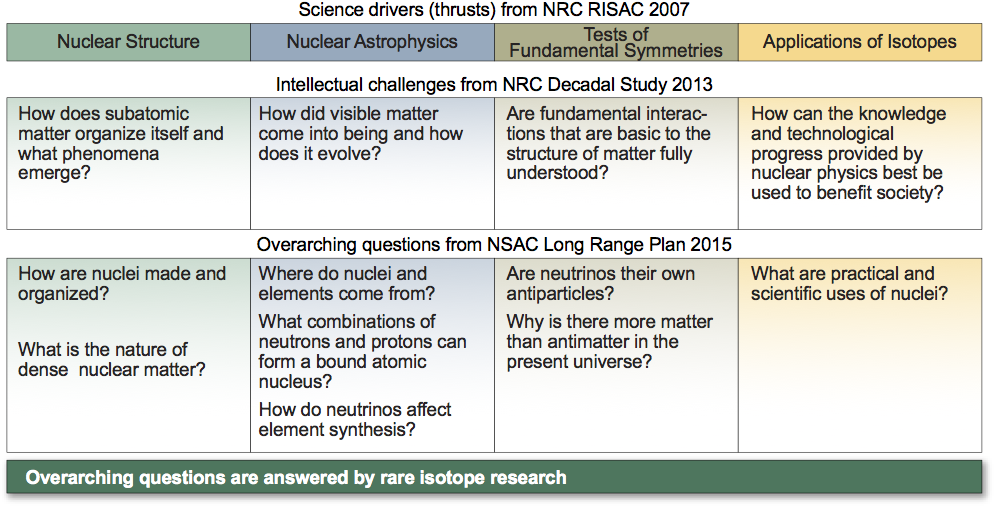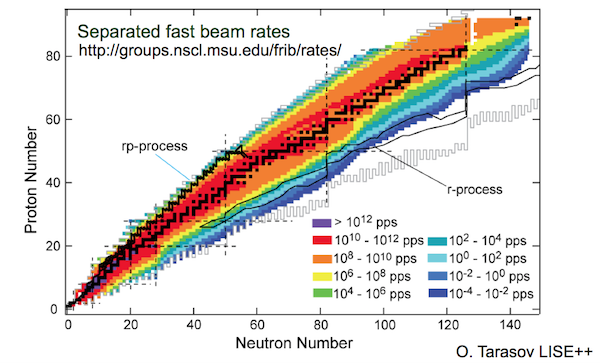FRIB Science - Overview

The intellectual challenges for low-energy nuclear science were captured well in the four overarching questions posed in the most recent National Research Council decadal study of nuclear physics:
- How did visible matter come into being and how does it evolve?
- How does subatomic matter organize itself and what phenomena emerge?
- Are the fundamental interactions that are basic to the structure of matter fully understood?
- How can the knowledge and technological progress provided by nuclear science best be used to benefit society?
Answers to these questions require a deeper understanding of atomic nuclei -- both theoretically and experimentally -- than we currently possess. The path to a deeper understanding requires new insights from experiments on rare isotopes that will, in turn, guide new theoretical approaches by discovery of model deficiencies and missing physics. The ultimate goals of this effort:
- to develop a reliable model of nuclei and nuclear reactions with predictive power and quantified uncertainties,
- experimental determinations of important properties for key nuclei.
Together, these will expand our knowledge of the nuclear world and enable us to: determine the fusion rates of light nuclei; predict the fission patterns of actinides; trace the origin of the elements in the cosmos; interpret neutrinoless double beta-decay and dark matter searches; improve diagnosis and treatment of some diseases; and significantly contribute to the stewardship of our nuclear stockpile.
FRIB Beam Intensities

FRIB will provide unparalleled scientific opportunities largely as a result of providing unparalleled beam intensities of the most exotic nuclei. The projected beam intensities at FRIB (full power) are shown in the figure. For projected intensities for individual nuclei, use the available calculator.